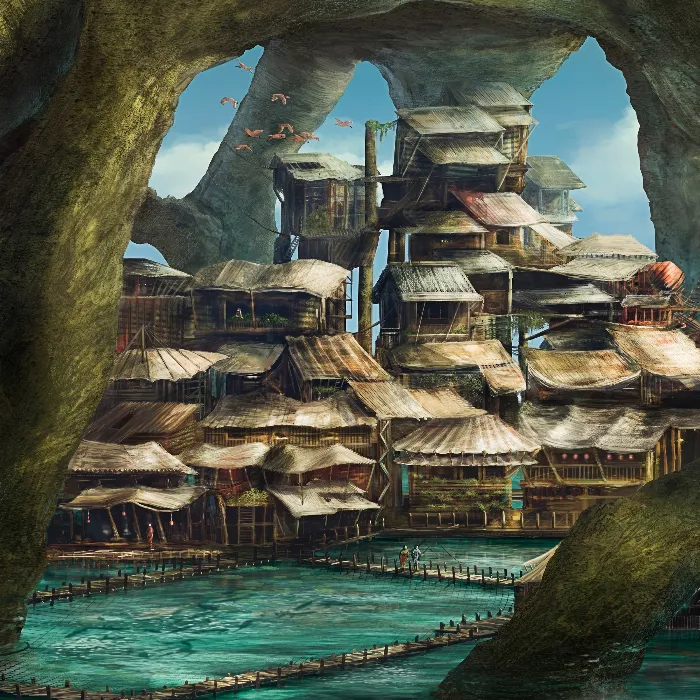Digital Painting and Matte Painting are creative disciplines that allow artists to transfer their ideas and visions into the digital world. Understanding the differences between these techniques is crucial to achieving both artistic freedom and technical excellence in your work. In this guide, you will learn about the different approaches you can use to create impressive digital art while developing your individual skills.
Main Insights
- Photo montages heavily rely on existing images and can limit artistic freedom.
- Digital painting offers more creative leeway, but requires more time.
- A hybrid form of photography and painting can be an effective way to achieve details and structure.
- Techniques like Google SketchUp help create perspective-correct image compositions.
Step-by-Step Guide
1. Understand the Basics of Photo Montages
At the beginning, you should familiarize yourself with photo montages. This technique requires you to rely heavily on existing photos, which presents both a significant challenge and a lesson in photo editing. You will need to spend a lot of time searching for and editing photos to harmoniously combine them. It's important that when working with photo montages, you check the perspective and proportions of the elements to create a credible image.
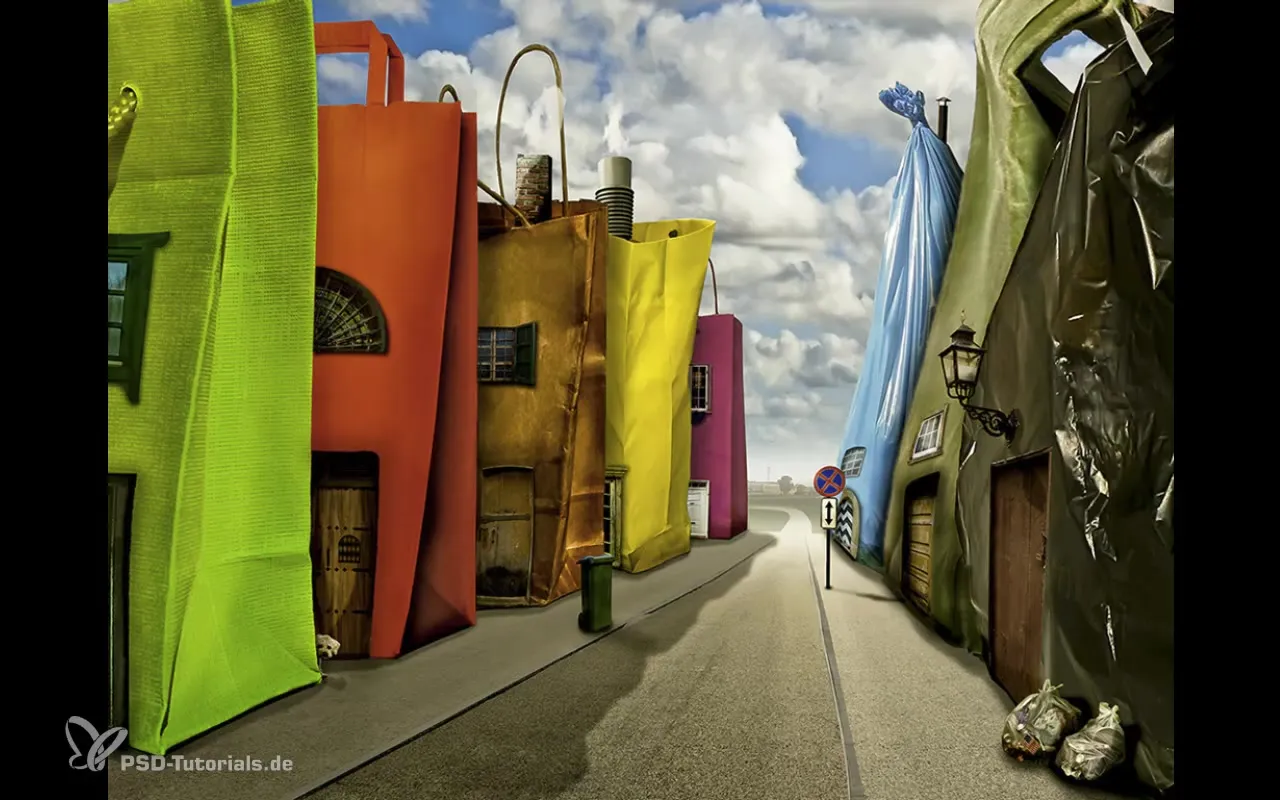
2. Create Concept Drawings
Before diving directly into photo editing, it can be helpful to create a concept image first. Roughly sketch the lighting conditions, structures, and shapes you want in your final image. This gives you a clear idea of how your image should look, making the subsequent photo editing easier.
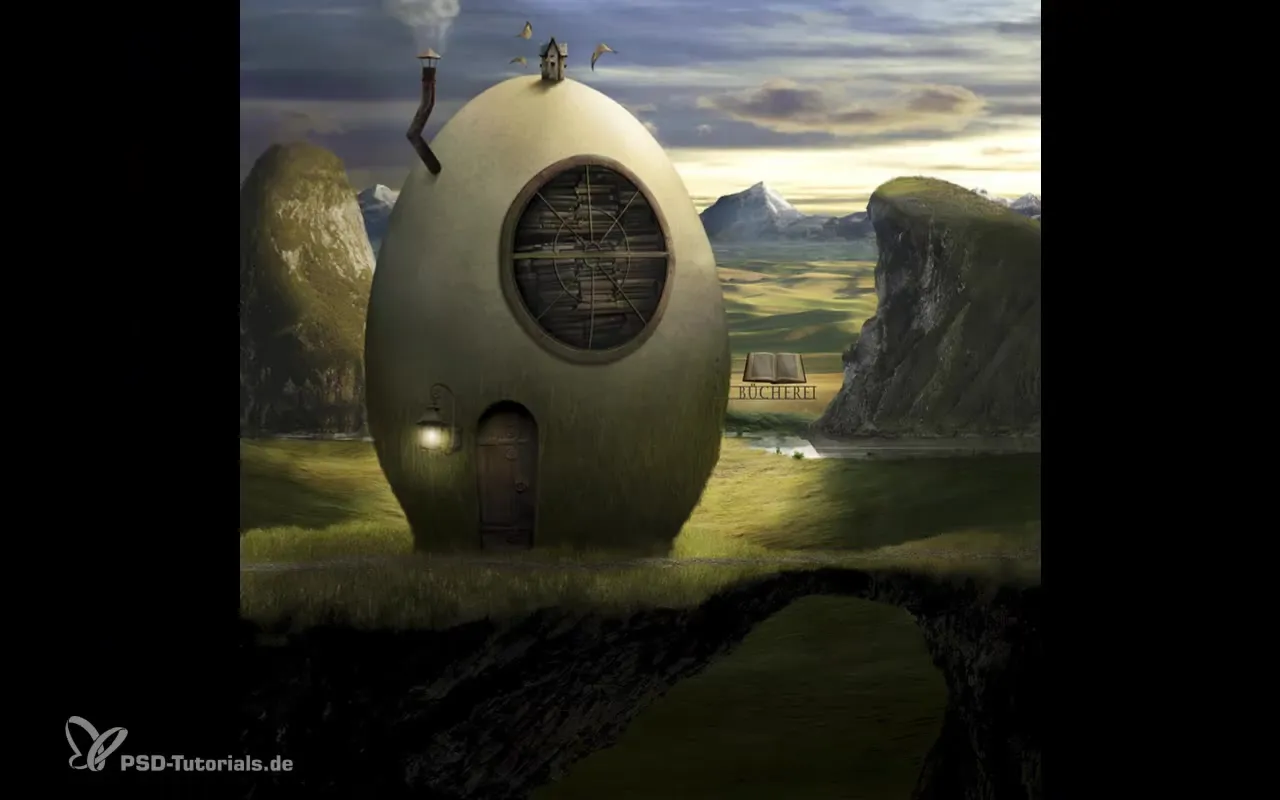
3. From Photo Montage to Digital Painting
Once you have understood the basics of photo montages, you can focus on digital painting. Choose a subject you like, and start with an image from scratch. In this step, you have the freedom to shape the forms and colors according to your preference. You can create your own structures without relying on existing photos.
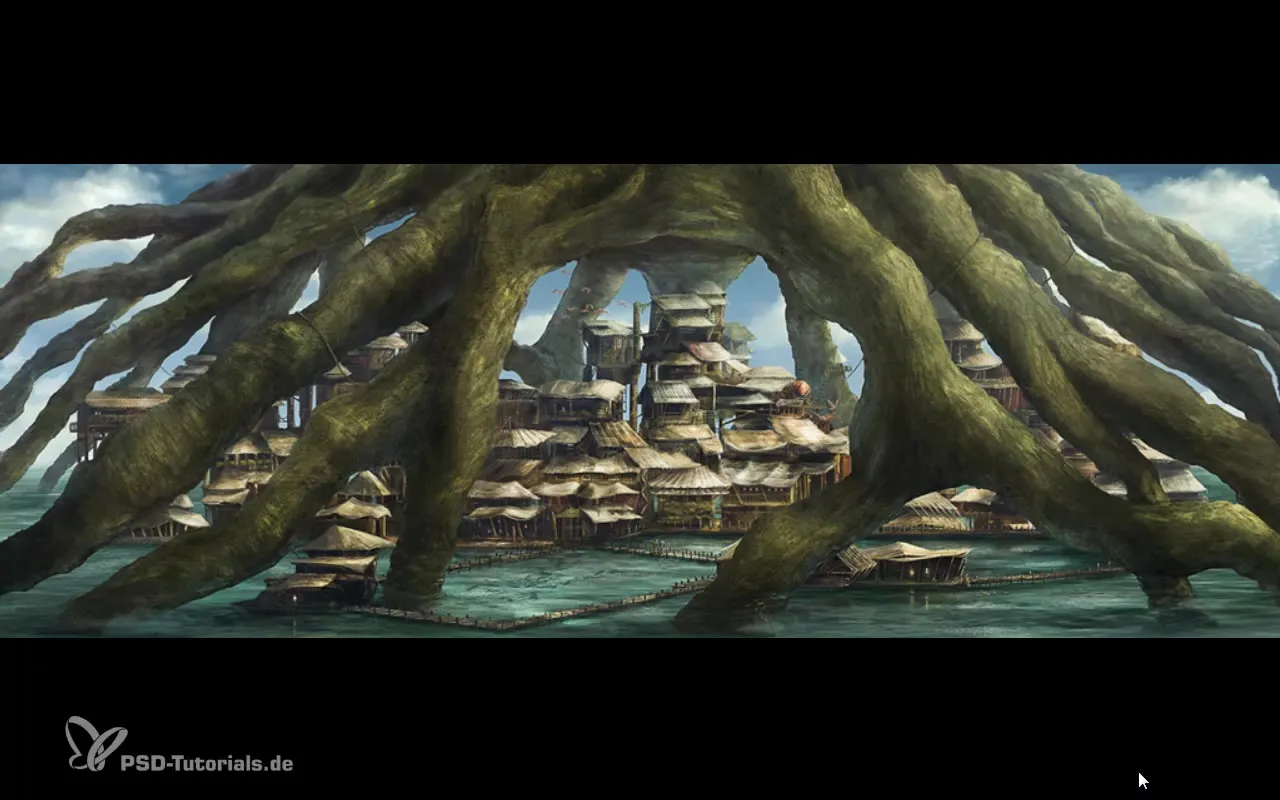
4. Utilize the Hybrid Form
To combine the best of both worlds, you can use the hybrid form between photography and painting. Draw the main elements and add photos to highlight textures and details. This allows you to merge the structure of photography with the painterly style of digital painting, resulting in a powerful and believable outcome.
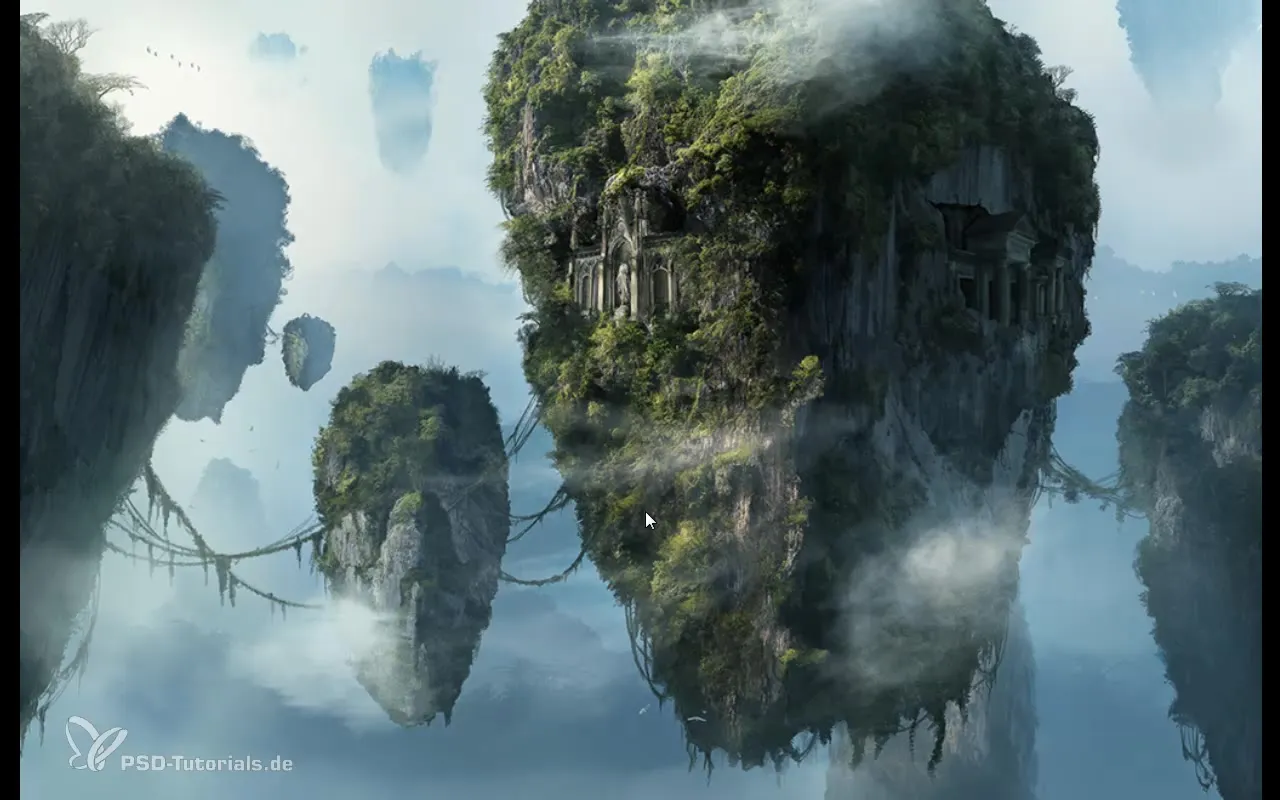
5. The Use of 3D Models
Another aspect of digital painting is the use of 3D models, which help you to set the perspective correctly. With programs like Google SketchUp, you can create simple models and paint over them. This provides you with both the correct proportions and the needed freedom to shape the image according to your desires.
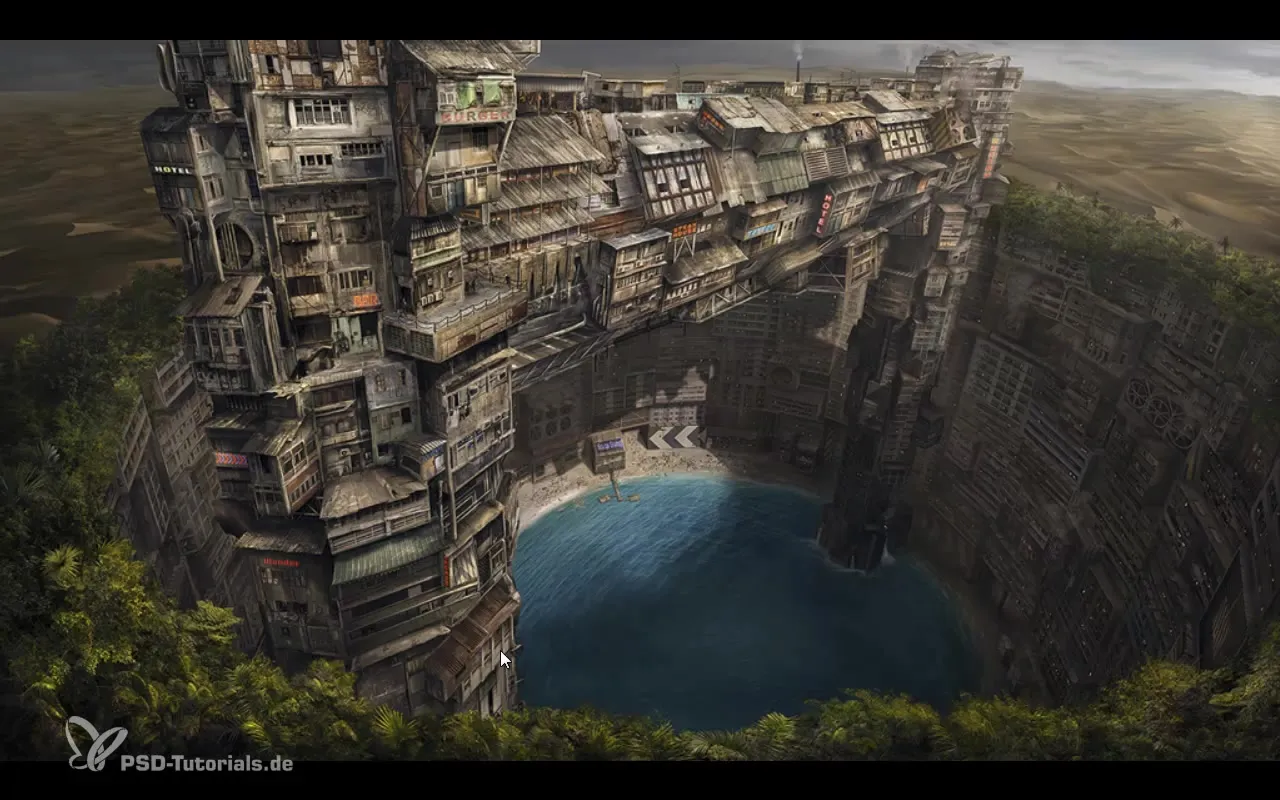
6. Finding the Balance
An important point is the balance between details and artistic freedom. If you invest a lot of time in details, it can lead to a limitation of your creative expression. Develop your technique further to find an effective workflow that enables you to work quickly while maintaining a high quality in your work.
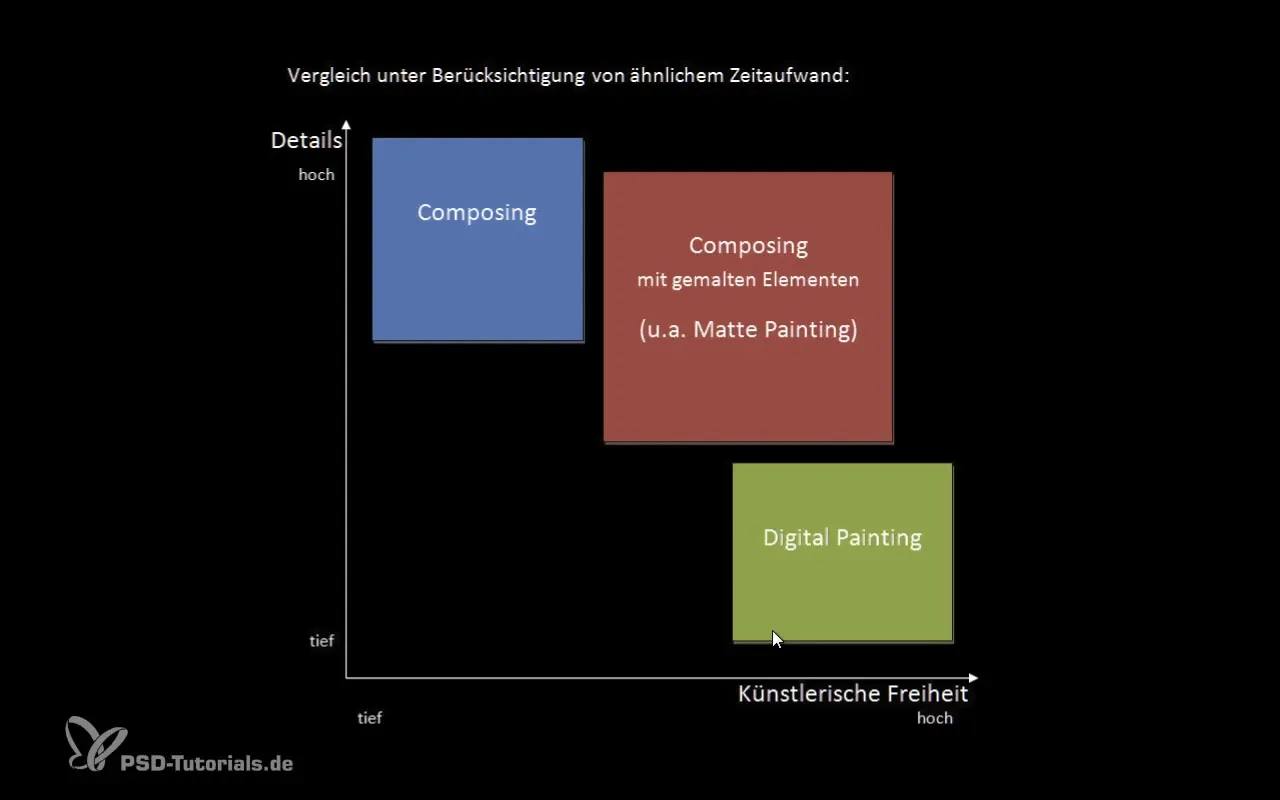
7. Understand Matte Painting Techniques
If you focus on matte painting, you should know that this technique is primarily used in film. The art lies in creating impressive landscapes and scenes that are often realistic yet artistically edited. Working with light and shadow is particularly important here to create a realistic impression.
Summary - Digital Painting & Matte Painting: Techniques at a Glance
In this guide, you have learned about the various techniques in digital painting and matte painting. The choice between photo montage, digital painting, and the hybrid form depends on your artistic goal. It is crucial to practice and combine techniques to develop your individual style.
Frequently Asked Questions
What are the fundamental differences between Digital Painting and Photo Montage?Digital Painting allows for more creative freedom, while photo montages heavily rely on existing images.
How can I improve my perspectives in images?Use 3D models to correctly shape proportions and perspectives.
What are the advantages of Matte Painting?Matte Painting allows for the creation of realistic and artistic landscapes that are often used in film and games.
How much time should I plan for the details in my work?This depends on your style; detail work can be time-consuming, but it's important to find a balance.
What should I check next to continue developing?Experiment with different techniques and find out which hybrid form works best for your style.
